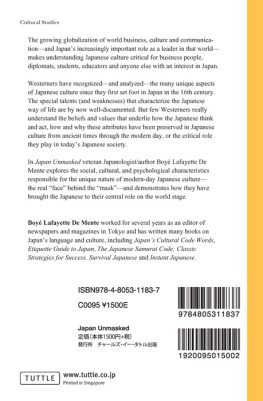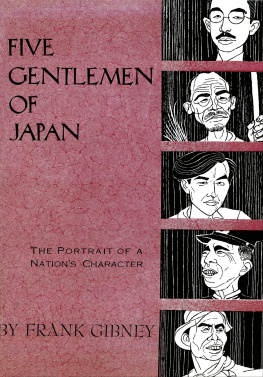JAPAN
OTHER BEAUTIFUL BOOKS ON JAPAN
EACH CONTAINING FULL-PAGE ILLUSTRATIONS IN COLOUR
ANCIENT TALES AND FOLK-LORE OF JAPAN
BY R. GORDON SMITH, F.R.G.S.
57 ILLUSTRATIONS BY JAPANESE ARTISTS
THE FLOWERS AND GARDENS OF JAPAN
DESCRIBED BY FLORENCE DU CANE
50 ILLUSTRATIONS BY ELLA DU CANE
JAPAN
In the Peeps at Many Lands and Cities Series
BY JOHN FINNEMORE
12 ILLUSTRATIONS IN COLOUR
PEEPS AT THE HISTORY OF JAPAN
BY JOHN FINNEMORE
8 ILLUSTRATIONS IN COLOUR AND
NUMEROUS LINE DRAWINGS IN THE TEXT
Published By
Adam & Charles Black, 4, 5 and 6 Soho Square, London, W.
MISS POMEGRANATE
JAPAN A RECORD IN COLOUR BY MORTIMER MENPES TRANSCRIBED BY DOROTHY MENPES PUBLISHED BY ADAM & CHARLES BLACK SOHO SQUARE LONDON W.
Published December 1901
Reprinted May 1902, January 1903, January 1904
January 1905
TO MY FRIEND
THE LADY EDWARD CECIL
TO WHOSE ENTHUSIASTIC SYMPATHY
MY WORK IN JAPAN
OWES SO MUCH OF THE SUCCESS
IT HAS ATTAINED
Note
In this book I endeavour to present, with whatever skill of penmanship I may possess, my fathers impressions of Japan. I trust that they will not lose in force and vigour in that they are closely intermingled with my own impressions, which were none the less vivid because they were those of a child,for it was as a child, keenly interested in and enjoying all I saw, that I passed, four or five years ago, through that lovely flower-land of the Far East, which my father has here so charmingly memorialised in colour.
DOROTHY MENPES
November 1901.
Contents
| CHAPTER I |
| PAGE |
| Art and the Drama |
| CHAPTER II |
| The Living Art |
| CHAPTER III |
| Painters and their Methods |
| CHAPTER IV |
| Placing |
| CHAPTER V |
| Art in Practical Life |
| CHAPTER VI |
| The Gardens |
| CHAPTER VII |
| Flower Arrangement |
| CHAPTER VIII |
| The Geisha |
| CHAPTER IX |
| Children |
| CHAPTER X |
| Workers |
| CHAPTER XI |
| Characteristics |
List of Illustrations
| 1. | Miss Pomegranate | Frontispiece |
| FACING PAGE |
| 2. | An Actor |
| 3. | Watching the Play |
| 4. | The Bill of the Play |
| 5. | A Garden |
| 6. | The Road to the Temple |
| 7. | The Street with the Gallery |
| 8. | Sun and Lanterns |
| 9. | Summer Afternoon |
| 10. | Apricot-Blossom Street |
| 11. | Outside Kioto |
| 12. | A Blond Day |
| 13. | A Blind Beggar |
| 14. | The Giant Lantern |
| 15. | Sun and Lanterns |
| 16. | The Scarlet Umbrella |
| 17. | Leading to the Temple |
| 18. | By the Light of the Lanterns |
| 19. | News |
| 20. | A Sunny Temple |
| 21. | On the Great Canal, Osaka |
| 22. | After the Festival |
| 23. | The Lemon Bridge |
| 24. | Bearing a Burden |
| 25. | The End of the Day and the End of the Festival |
| 26. | In Front of the Stall |
| 27. | The Stall by the Bridge |
| 28. | Archers |
| 29. | Reflections |
| 30. | The Red Curtain |
| 31. | Flower of the Tea |
| 32. | A Street in Kioto |
| 33. | Heavy-laden |
| 34. | Peach-Blossom |
| 35. | The Tea-house of the Slender Tree |
| 36. | Blossom of the Glen |
| 37. | A Family Group |
| 38. | The Venice of Japan |
| 39. | An Iris Garden |
| 40. | A Sunny Garden |
| 41. | Iris Garden |
| 42. | A Wistaria Garden |
| 43. | Flower-placing |
| 44. | Wistaria |
| 45. | Butterflies |
| 46. | Daughters of the Sun |
| 47. | By the Light of the Lantern |
| 48. | A Street Scene, Kioto |
| 49. | Baby and Baby |
| 50. | A Jap in Plum-colour |
| 51. | Sugar-water Stall |
| 52. | Advance Japan |
| 53. | Chums |
| 54. | A Sunny Stroll |
| 55. | The Child and the Umbrella |
| 56. | A Little Jap |
| 57. | A By-canal |
| 58. | Swinging along in the Sun |
| 59. | A Metal-worker |
| 60. | Bronze-workers |
| 61. | In Theatre Street |
| 62. | The Carpenter |
| 63. | Making up Accounts |
| 64. | Finishing Touches |
| 65. | A Back Canal, Osaka |
| 66. | Stencil-makers |
| 67. | A Sign-painters |
| 68. | A Cloisonn Worker |
| 69. | A Toy-shop |
| 70. | A Sweet-stuff Stall |
| 71. | A Canal in Osaka |
| 72. | Umbrellas and Commerce |
| 73. | Playfellows |
| 74. | Youth and Age |
| 75. | Lookers-on |
ART AND THE DRAMA
AN ACTOR
CHAPTER I
ART AND THE DRAMA
I always agree with that man who said, Let me make the nations songs and I care not who frames her laws, or words to that effect, for, in my opinion, nothing so well indicates national character or so keenly accentuates the difference between individuals and nations as the way in which they spend their leisure hours; and the theatres of Japan are thoroughly typical of the peoples character. It would be utterly impossible for the Japanese to keep art out of their lives. It creeps into everything, and is as the very air they breathe. Art with them is not only a conscious effort to achieve the beautiful, but also an instinctive expression of inherited taste. It beautifies their homes and pervades their gardens; and perhaps one never realises this all-dominating power more fully than when in a Japanese theatre, which is, invariably, a veritable temple of art. But here with us in the West it is different. We have no art, and our methods merely lead us to deception, while we do not begin to understand those few great truths which form the basis of oriental philosophy, and without which perfection in the dramatic art is impossible. For example, the philosophy of balance, of which the Japanese are past masters, is to us unknown. The fact that Nature is commonplace, thereby forming a background, as it were, for Tragedy and the spirit of life to work, has never occurred to us; while the background of our Western play is not by any means a plan created by a true artist upon which to display the dramatic picture as it is in Japan, but simply a background to advertise the stage-managers imitative talent. The result is, of course, that the acting and the environment are at variance instead of being in harmonic unity. But we in the West have not time to think of vague things, such as balance and breadth and the creating of pictures. What we want is realism; we want a sky to look like a real sky, and the moon in it to look like a real moon, even if it travels by clock-work, as it has been known to do occasionally. And so real is this clock-work moon that we are deceived into imagining that it is the moon, the actual moon. But the deception is not pleasant; in fact, it almost gives you indigestion to see a moon, and such a moon, careering over the whole sky in half an hour. In Japan they would not occupy themselves with making you believe that a moon on the stage was a real onethey would consider such false realism as a bit of gross degradationbut they would take the greatest possible pains as to the proper placing of that palpably pasteboard moon of theirs, even if they had to hold it up in the sky by the aid of a broom-stick.









